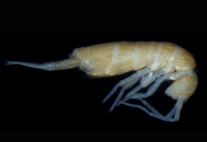Abstract
The genus Pisione Grube 1857 was composed up to now of 40 species and 4 subspecies. Although distributed worldwide, in the Mexican Pacific little is known about its taxonomy and distribution, and only two species of this genus have been recorded: Pisione longispinulata Aguado & San Martín, 2004 and Pisione remota (Southern, 1914), but the records of the latter remain questionable. For this study, 406 pisionids from soft sediments of Acapulco Bay, Southern Mexican Pacific, were examined. Two new species are described: Pisione hippocampus n. sp. characterized by having protruding notoaciculae in posterior chaetigers, the second dorsal cirrus elongated and copulatory organs resembling the body shape of a seahorse and Pisione sanmartini n. sp. characterized by having protruding notoaciculae from the first chaetiger, buccal aciculae with a distal crenulate plate resembling the edge of a shell, and prechaetal bifurcated lobes along the body. Pisione galapagoensis Westheide, 1974 is newly recorded for the Mexican Pacific, its known distribution being extended northward from the Galapagos Islands and Panama. A comparative table with the main diagnostic characters and the distribution of all the species so far described in the genus Pisione is included, as well as a key to the species of the Eastern Pacific.

